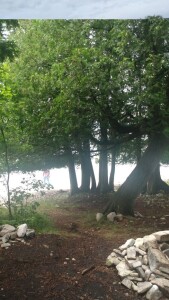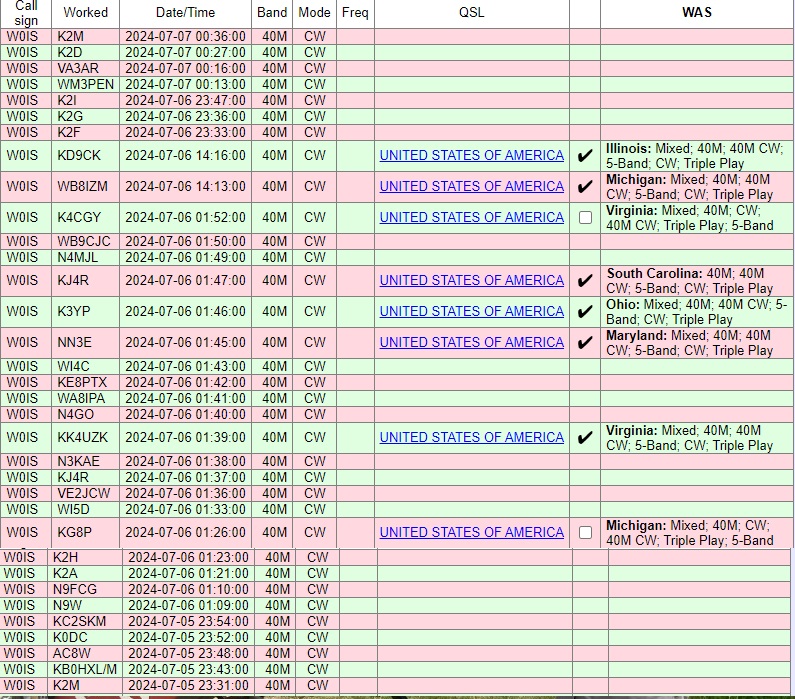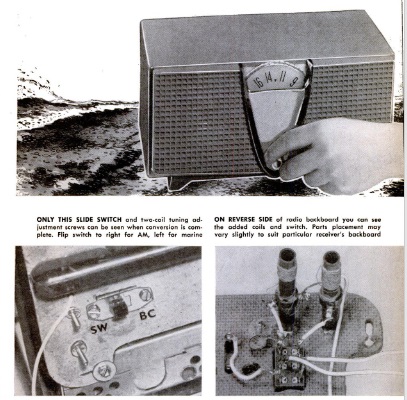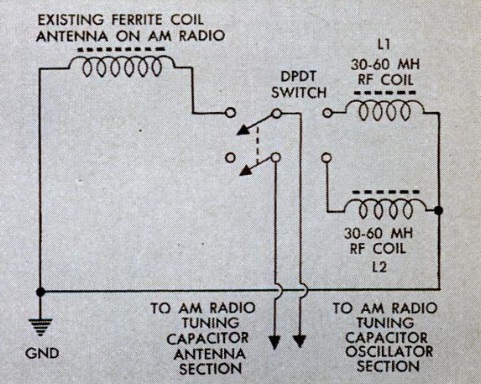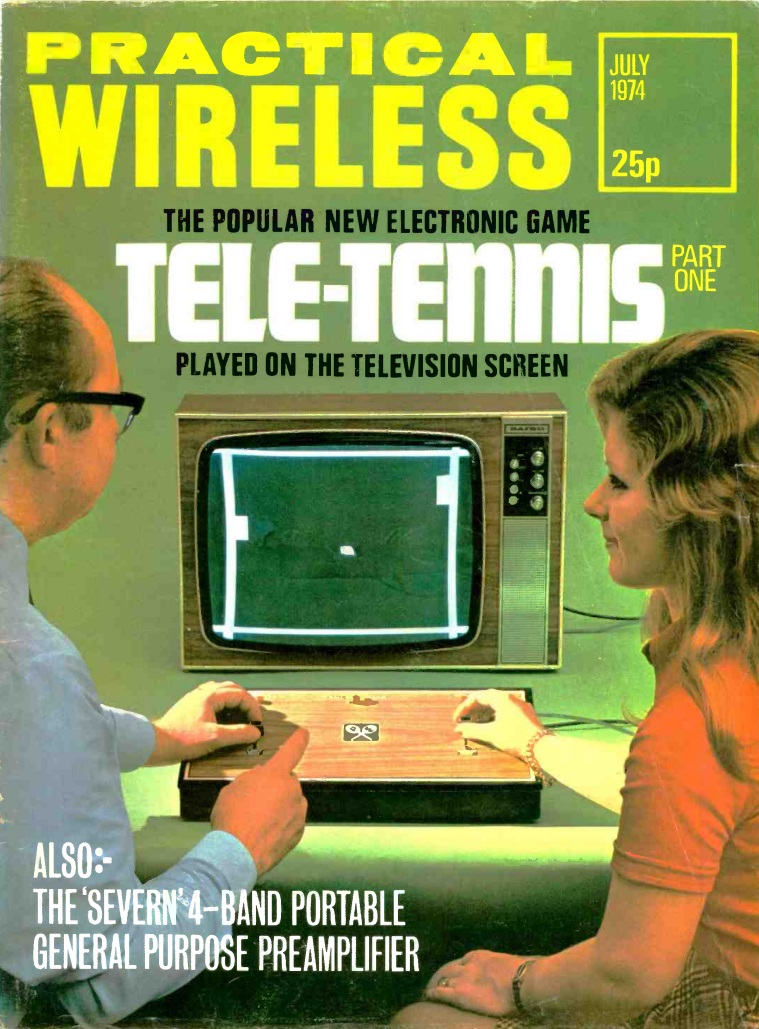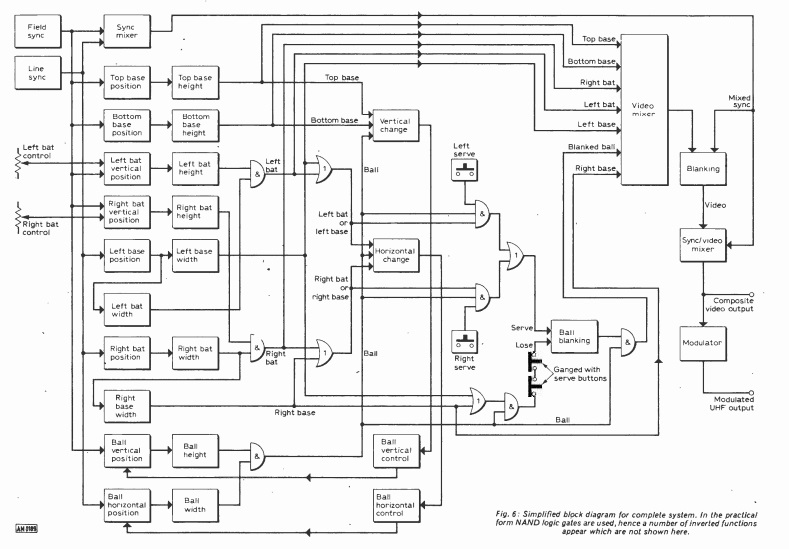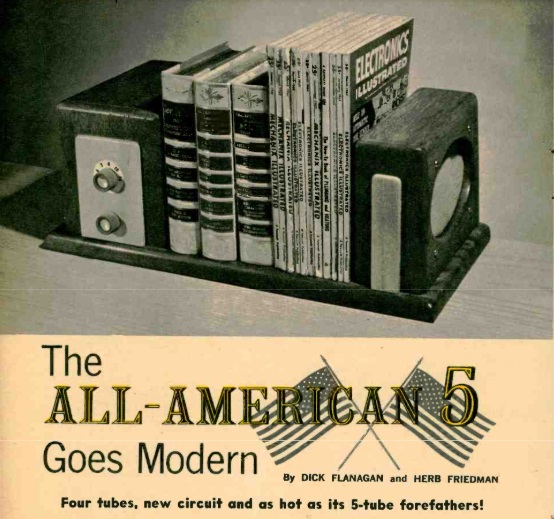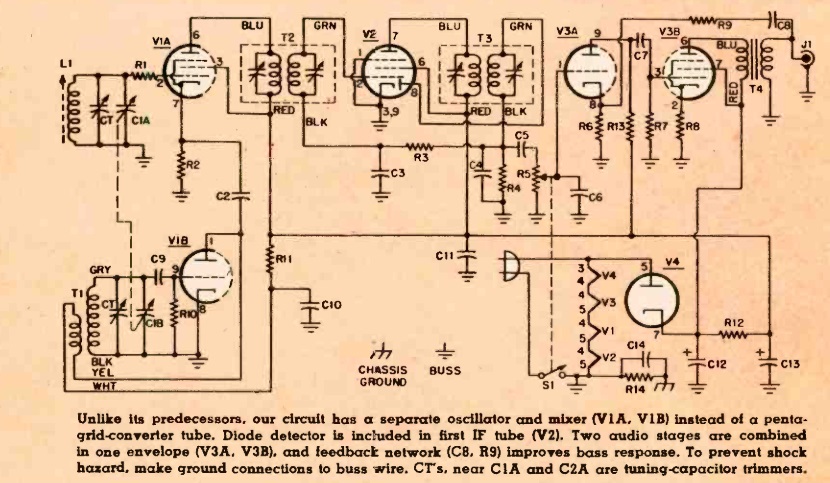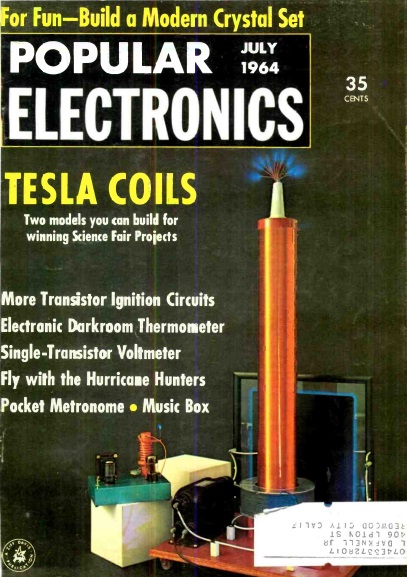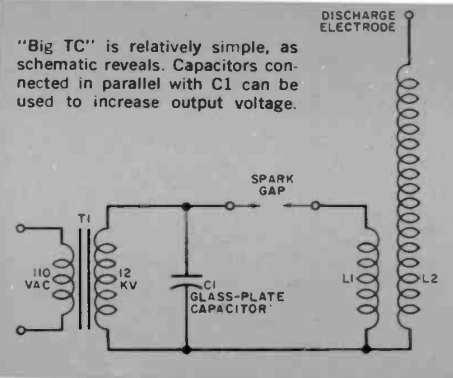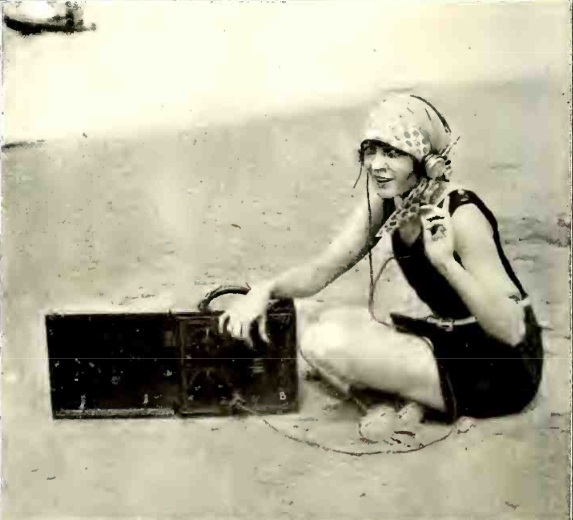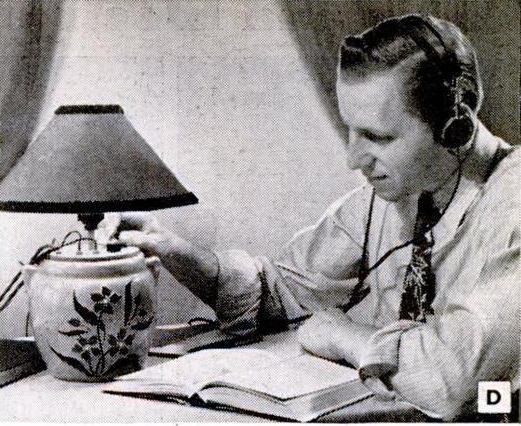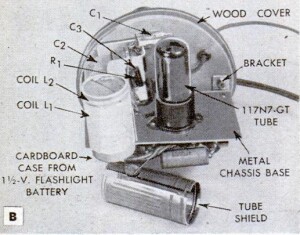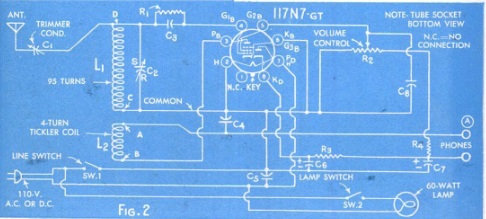
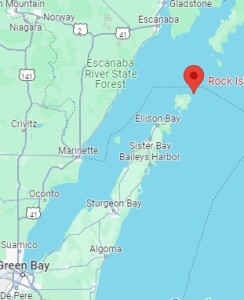 Over the Fourth of July weekend, my son and I decided to make a spur-of-the-moment camping trip to Rock Island State Park, Wisconsin, which is at the northern tip of Door County and at the entrance of Green Bay. It’s a state park accessible only by boat. Unless you have your own boat, you take a car ferry from the mainland to Washington Island, drive across that Island, park your car, and then take a passenger ferry to Rock Island. No reservations are required for either ferry, and they add as many boats as necessary to accommodate the traffic. We bought a round trip on both ferries at the dock, and the cost was about $90 for one car and two passengers.
Over the Fourth of July weekend, my son and I decided to make a spur-of-the-moment camping trip to Rock Island State Park, Wisconsin, which is at the northern tip of Door County and at the entrance of Green Bay. It’s a state park accessible only by boat. Unless you have your own boat, you take a car ferry from the mainland to Washington Island, drive across that Island, park your car, and then take a passenger ferry to Rock Island. No reservations are required for either ferry, and they add as many boats as necessary to accommodate the traffic. We bought a round trip on both ferries at the dock, and the cost was about $90 for one car and two passengers.
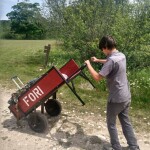 The campground is about a quarter mile from the boat landing, and the park provides carts, shown here, to move your stuff. My son did the hauling, and we quickly had our campsite, which was right on the shore of Lake Michigan, set up.
The campground is about a quarter mile from the boat landing, and the park provides carts, shown here, to move your stuff. My son did the hauling, and we quickly had our campsite, which was right on the shore of Lake Michigan, set up.
Like most state park campgrounds, sites fill up fast, especially on a holiday weekend. But when I checked two days before arrival, there were sites available for both Friday and Saturday night. They were different sites, meaning we would have to move after the first night. But fortunately, the occupants of one of the sites had left early, and after checking with the campground host and warden, we were allowed to have the same site both nights.
Of course, it wouldn’t be a camping trip without bringing a radio, and I brought along the QRP Labs QCX Mini, shown here. This is a handheld CW transceiver for one band (in my case, 40 meters). For the power supply, I brought along my fish finder battery, which I also used to charge my cell phone. (We did have good cell phone service from most of the island, including the campground, through Boost Mobile. My son, on the other hand, who has service through Tello, had no signal, so your mileage might vary.)
I made a total of 33 radio contacts over the course of a couple of hours, covering the eastern half of North America, from Quebec to Georgia. If I had stayed up later, I would have been able to work the western United States. But 40 meters covers long distances best at night, and I shut down around local sunset, meaning the West Coast didn’t have a chance to work me. Ideally, I would have been on 20 meters as well for some daytime contacts, but I wanted to keep the station size and weight to a minimum. The complete log is shown below.
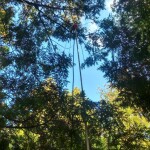 I used my usual antenna, namely, a dipole supported by my trusty golf ball retriever leaning against the picnic table, with the two 33-foot wires extending out from the table. The wires were actually just draped over tree branches. You don’t need an elaborate antenna to get out well. Despite the various reasons that it shouldn’t work (too low, touching trees, etc.), it got out very well.
I used my usual antenna, namely, a dipole supported by my trusty golf ball retriever leaning against the picnic table, with the two 33-foot wires extending out from the table. The wires were actually just draped over tree branches. You don’t need an elaborate antenna to get out well. Despite the various reasons that it shouldn’t work (too low, touching trees, etc.), it got out very well.
You will notice that many of the contacts are with 1×1 call signs who, along with WM3PEN, were taking part in the 13 Colonies special event. If you are doing a park activation during a similar event or contest, that’s always a good opportunity to put some contacts in the log.
Other notable contacts included WB8IZM, who was operating from another park, Potagannissing Flooding Wildlife Management Area near Sault Ste. Marie, Michigan, and KB0HXL, who was operating from his car in Indiana.
I’ve always enjoyed operating from remote locations with portable equipment, an activity which has gotten easier over the years with the advent of radios such as the QCX. It’s also become a very popular activity. Starting in 2016, the National Parks On The Air (NPOTA) activity was extremely popular, and after it ended, many American hams continued, thanks to the WWFF (World Wide Flora and Fauna in Amateur Radio) activity that had started to enjoy popularity in Europe. Shortly thereafter, a separate program, Parks On The Air (POTA) has become extremely popular. In addition, since I was on an Island, I was able to participate in the U.S. Islands Award Program. I was able to hand out contacts for all three programs. I didn’t make the required 44 contacts to make it an official activation for WWFF, but I was able to meet the minimums for both POTA and US Islands. If I had been able to get on 20 meters, I’m sure I would have made many more contacts, but as it was, I was able to give credit for a fairly rare park.
And even though we had cell phone coverage (except for a brief outage on Sunday morning), it’s reassuring to know that, in case of emergency, we have a reliable method of communications with the outside world.
 Rock Island was originally developed as the vacation getaway of inventor Chester Thordarson, founder of the transformer company that bears his name. He built the iconic boathouse shown here, which serves as the terminal for the passenger ferry. The campground is located about a quarter mile away, with a more distant backpacking campground somewhat further away. We also hiked to Pottawatomie Light , Wisconsin’s oldest lighthouse, dating to 1836. The lighthouse is about 1.5 miles from the campground.
Rock Island was originally developed as the vacation getaway of inventor Chester Thordarson, founder of the transformer company that bears his name. He built the iconic boathouse shown here, which serves as the terminal for the passenger ferry. The campground is located about a quarter mile away, with a more distant backpacking campground somewhat further away. We also hiked to Pottawatomie Light , Wisconsin’s oldest lighthouse, dating to 1836. The lighthouse is about 1.5 miles from the campground.
With carts available, setting up camp on foot was relatively easy. Unlike backpacking, where you have to consider every ounce, the carts made the trip fairly easy. It would have worked a bit better to bring a wagon from home, since we could have just packed it once before getting on the ferry. Also, the provided carts were somewhat heavy, and a wagon probably would have been a bit easier to move. Large wheels are important, because the paths on Rock Island are, well, rocky. I was initially thinking of just packing things in a roll-on suitcase, but this would have been a bad choice, since the wheels would have just been too small. We used an inexpensive tent and air mattress. The ground is covered with roots and rocks, so some kind of pad is a must.
Flush toilets are available near the boathouse, and the campground has vault toilets. Drinking water is available near the boathouse. We realized on the way that we hadn’t brought a water container, so we just bought a one-gallon jug of water and filled it as needed. Firewood is available on the island for $7 (cash only), We used that for most of our cooking, although I did some of it on the emergency stove I previously reviewed. I discovered that four fuel tablets were about enough to boil enough water for oatmeal and coffee. We had only a very small cooler, so for the first night, we cooked some brats on the fire, but on the second day, we ate packaged food such as ramen noodles, to which you just add hot water. Another convenient meal choice was a prepared meal such as Hormel Compleats. These avoid any cleanup, since you can just put the sealed meal in a pot of hot water. Packets of meat such as the pulled pork we previously reviewed are also easy to cook this way.
There is a very small camp store on Rock Island, but other than a few bags of chips and a few Clif bars, they don’t sell food or camping supplies. It’s mostly souvenirs and apparel. So you do need to plan ahead. But as long as you do your minimal planning, Rock Island provides an opportunity to easily do some camping completely off the grid.
x
Some links on this site are affiliate links, meaning this site earns a small commission if you make a purchase after using the link.


